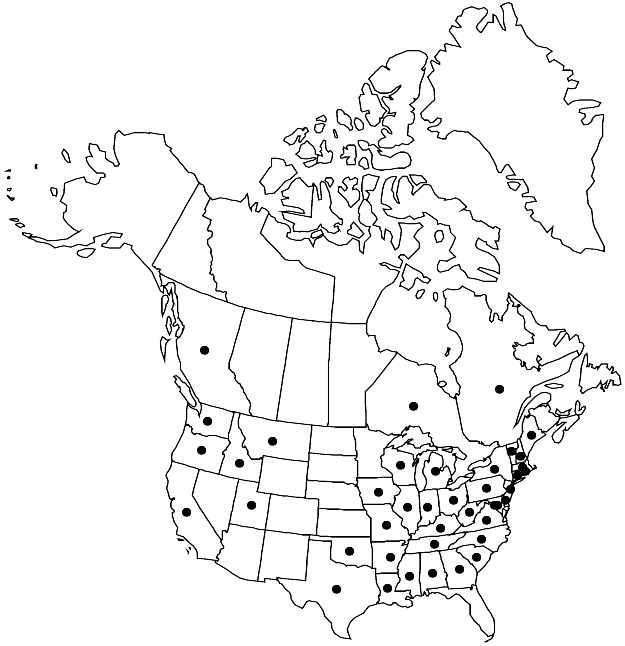Arabidopsis thaliana
in F. Holl and G. Heynhold, Fl. Sachsen 1: 538. 1842.
Annuals; glabrous or pubescent, trichomes usually simple, sometimes mixed with stalked, forked ones. Stems simple or few from base, erect, unbranched or branched distally, (0.2–)0.5–3(–5) dm, pubescent basally, trichomes predominantly simple, glabrous apically. Basal leaves shortly petiolate; blades obovate, spatulate, ovate, or elliptic, 0.8–3.5(–4.5) cm × (1–)2–10(–15) mm, margins entire, repand, or dentate, apex obtuse, adaxial surface with predominantly simple and stalked, 1-forked trichomes. Cauline leaves subsessile; blade lanceolate, linear, oblong, or elliptic, (0.4–)0.6–1.8(–2.5) cm × 1–6(–10) mm, margins usually entire, rarely toothed. Fruiting pedicels divaricate, 3–10(–15) mm. Flowers: sepals 1–2(–2.5) mm, lateral pair not saccate basally, (glabrous or sparsely pubescent distally, trichomes simple); petals white, spatulate, 2–3.5(–4) × 0.5–1.5 mm, (base attenuate to claw); filaments 1.5–2 mm. Fruits cylindric or linear, smooth, terete, (0.8–)1–1.5(–1.8) cm × 0.5–0.8 mm; valves each with distinct midvein; ovules 40–70 per ovary; style to 0.5 mm. Seeds light brown, (plump), ellipsoid 0.3–0.5 mm; cotyledons incumbent. 2n = 10.
Phenology: Flowering Feb–May.
Habitat: Sandy areas along roadsides, stream banks, railroad tracks and embankments, open pastures, grassy flats, fields, prairies, floodplains, woods, lawns, limestone ledges and crevices, bluffs, shale and serpentine barrens, gravel, sandstone
Elevation: 0-1000 m
Distribution

Introduced; B.C., Ont., Que., Ala., Ark., Calif., Conn., Del., D.C., Ga., Idaho, Ill., Ind., Iowa, Ky., La., Maine, Md., Mass., Mich., Miss., Mo., Mont., N.H., N.J., N.Y., N.C., Ohio, Okla., Oreg., Pa., R.I., S.C., Tenn., Tex., Utah, Vt., Va., Wash., W.Va., Wis., Europe, sw, c Asia, introduced also nearly worldwide.
Discussion
Arabidopsis thaliana is the most widely used model organism in plant biology. Its small genome size, fully sequenced in the year 2000, chromosome number, fast growth cycle (from seed germination to set in four to six weeks), small size (hundreds can be grown in a pot and thousands in a growth chamber), autogamous breeding system (induced mutations are expressed in two generations), and ability to grow on various synthetic media, all make the species an ideal system in experimental biology.
Selected References
None.